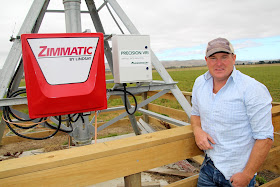The Importance of
Timeframes – Resource Consent Timeframes That Is…
Christmas seems to be a magic
deadline for people – apparently the 25th of December is the date at
which the professional world as we know it will cease to exist and heaven help
us if we miss it.
While Christmas is more of a
perceived deadline for things, there are some real resource consent timeframes
or deadlines that you should be aware of. As over-allocation of our resources has
become an issue, so has the methods by which councils can use to reduce
over-allocation. This is where
timeframes around consenting are beginning to bite and councils are actually
using their powers.
Lapse Date and the
Cancellation of a Consent
The first is the lapse date on a
resource consent. This is not the expiry
date, but rather the “use it or lose it” date.
From the date of grant of a consent, you have up to five years to use
the consent, or you lose it. This is
particularly important in over allocated water catchments for example as
lapsing a consent is one of the mechanisms that a council will use to claw back
over allocation. You may apply to the
council to extend your lapse date, but you have to be able to demonstrate to
the council that you have taken considerable action towards actually using the
consent. The maximum extension that
would normally be given is a further two years.
Even if a consent has been used
before the lapse date, it can still re-lapse if it is not used for a five-year
period after that, so this is something that you also need to be aware of. This
is referred to as cancellation of a consent.
Renewal of Existing Consents
There are also important
deadlines around renewing resource consents.
An application to renew a consent that is received by the council at
least six months prior to the expiry of the consent is guaranteed to be given
‘continuation’. What this means is that
you can continue to operate under your existing consent until such time that a
decision is made on the replacement.
Getting continuation is critical if processing the renewal is likely to
take considerable time like we have seen here in Canterbury where renewal
applications have spent years in process waiting on plans to be developed.
A renewal application received
after six months but before three months of the expiry date may get given
continuation, but it is at the council’s discretion.
Securing continuation also means
that you have priority to a resource over someone else competing for the same
resource. So again, if we think water
permits where a resource is nearing its full allocation, you want to be able to
re-secure your access to that water ahead of a new user.
If you find yourself within the three-month
window, then continuation cannot be given, and you must cease your activity at
the expiry date. If you are in an
over-allocation situation again, this may cause issues with your renewal, and
there is a risk of the council not granting the renewal consent (another way to
claw back over-allocation).
Expiry Date
Once a consent expires, and if no
application has been received by the council to renew the consent within the
required timeframes, then you no longer hold a consent to undertake that
activity or have any right at all to renew it.
If you find yourself in this situation, and you do want to carry on
undertaking your consented activity, then you have to apply as if you are a
brand-new consent. In over-allocated
areas, you may not even be able to apply for consent as many councils have now
made it a prohibited activity to apply for consent in over-allocated
areas. Prohibited means that you cannot
even apply to the council – the door is shut tight.
These dates are all things that
any consent holder needs to know. A
resource consent is not an unlimited right for unfettered access to a resource,
or to undertake an activity. It can be
revoked by not using it, or by failing to meet the timeframes around the
renewal process.
Also, a small request from this
consultant. An application for resource
consent can take a fair amount of time to prepare – even if it is for a
renewal, the amount of information required to be supplied is just the same as
it is for a new application. Therefore,
please give your consultant plenty of time to get the application in – it is no
good fronting up a week before the application must be submitted and expecting
that it can and will be done in that timeframe, and the same goes for that
magic Christmas deadline…



















